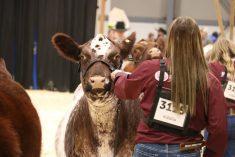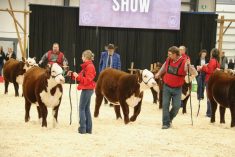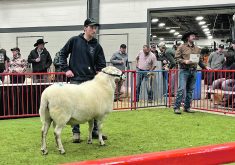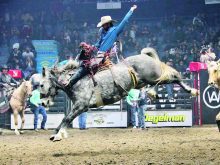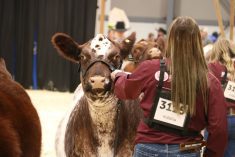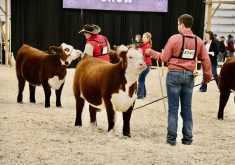Prices for bison breeding stock were down at last week’s national sale held during Canadian Western Agribition in Regina, reflecting conditions the entire agricultural sector has been struggling with for the last few years.
Canadian Bison Association President Les Kroeger said COVID market losses, drought and rising costs have combined to put his sector under pressure.
“Our marketplace is a little tight right now,” he said. “We’re under pressure and that was reflected in the prices.”
The high-selling animal was a yearling bull from Shale Creek Bison of Russell, Man., which sold for $8,000 to an Alberta buyer. The top-selling price on the female side was $4,100 and shared by a few animals, including the grand champion female shown by Shale Creek, which was named premier breeder at the show.
Read Also

Short rapeseed crop may put China in a bind
Industry thinks China’s rapeseed crop is way smaller than the official government estimate. The country’s canola imports will also be down, so there will be a lot of unmet demand.
The rookie of the year, Last Chance Bison from Rose Valley, Sask., showed the grand champion male, a yearling bull.
Kroeger said the pressure bison producers are under was evident in that several long-time consignors did not attend. Transport costs are high.
Prices for slaughter animals are down and prices for cull cows are particularly depressed.
“The cow-calf guy is probably the part of the marketplace taking the hardest hit right now,” he said.
Most producers appear to be hanging on for now but he said he wouldn’t be surprised to see some herd downsizing or dispersal, especially among older producers.
In his own case at Hanley, Sask., Kroeger said he is experiencing his fifth year of drought and the last two were severe.
“We had three inches of rain on our yard last year. That does not grow enough grass,” he said. “We want to stay in the industry but how long can we keep dipping into reserves?”
Kroeger said at least there is more feed available to buy this year, but producers still have to be able to pay for it.
Meanwhile, he said market re-development is taking place post-COVID, although that will take time. Some producers moved to farm-direct sales to replace lost markets.
And, like everyone else, bison producers are praying for good snow this winter and rain next year.
In the sale, two-year-old bulls averaged $4,680 on five head, while yearlings averaged $4,740.91 on 11 head.
Five two-year-old bred heifers averaged $4,020 on five lots, while pens of two bred heifers averaged $3,783.33 on six head.
Six single open yearling heifers sold for an average $2,533.33. Seven pens of two open heifers averaged $1,935.71.
A total of 47 animals sold for $147,100 and an average $3,129.79.
The sale was held by video at a Regina hotel following a bison day on the show grounds, which included a pow-wow, featuring drumming and dancing, and educational sessions on bison anatomy, how to judge bison and why someone might want to raise bison.
Agribition was held Nov. 28 to Dec. 3.




